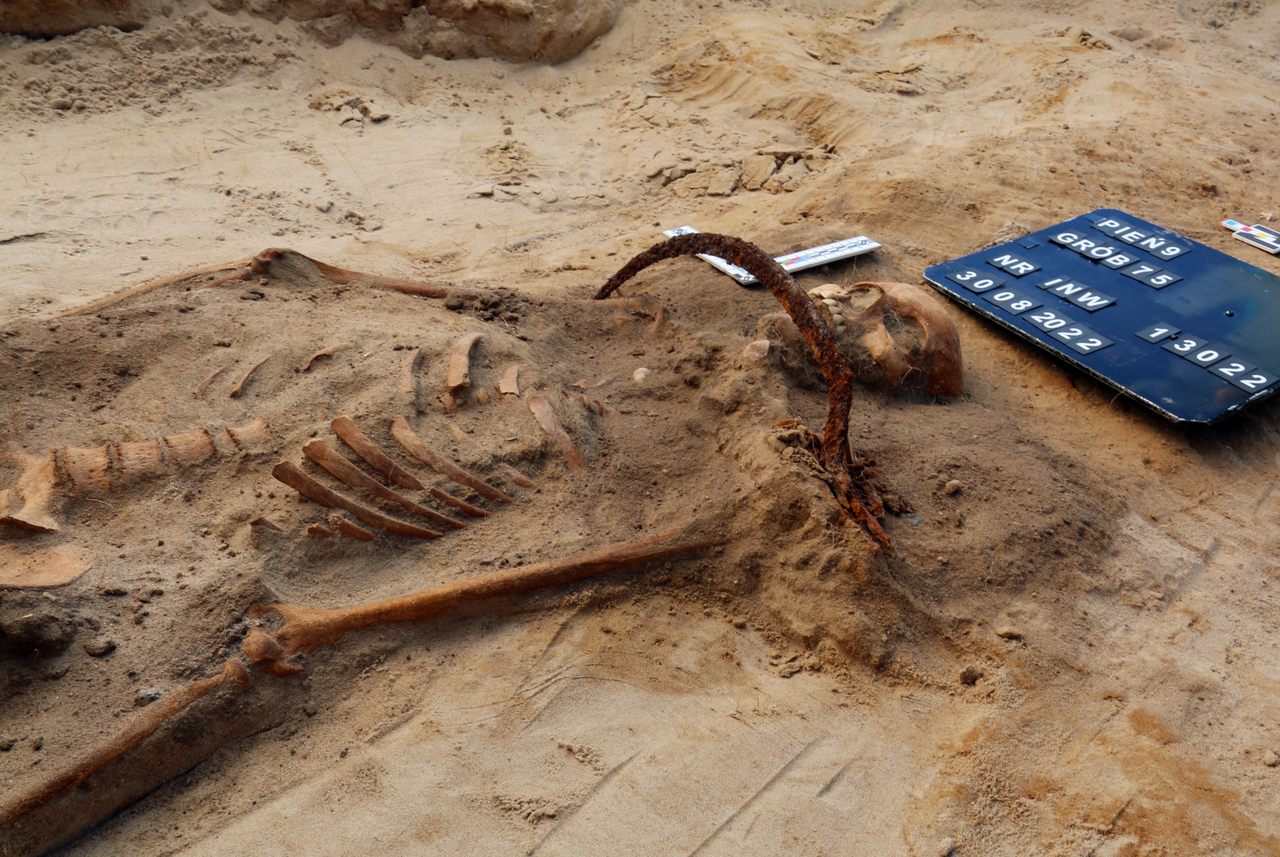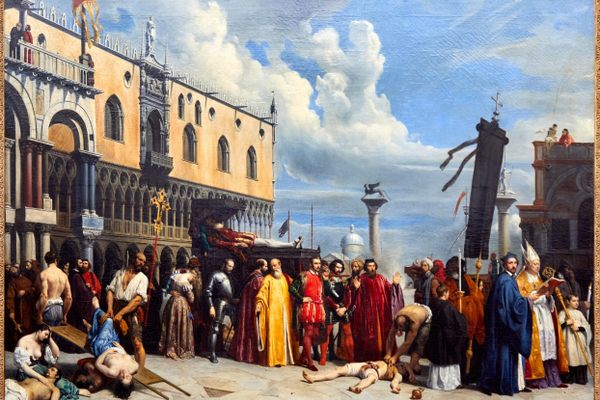The Truth Behind Poland’s ‘Anti-Vampire’ Graves
Can recent excavations answer questions about death and demonology in the 1600s?
In modern vampire lore, the process for becoming undead typically involves a darkly romantic setting, a fang-y bite, and a long, dramatic drink from the neck. But that’s the result of the last hundred years or so of vampire stories. In post-medieval Poland, undead evil was far more banal and less elegant; it was believed to possess the souls of those who had the misfortune to die early in epidemics, by suicide, or simply before being baptized. So when it came time to bury these poor souls, care was taken to ensure they would not provide an easy vessel for a malicious, supernatural force.
In late July 2023, archaeologists working on a 17th-century cemetery outside the southeastern Polish village of Pień excavated the remains of a child who appeared to have been interred in the period’s “anti-vampire” style. The child (its sex is unknown) placed face-down—with a padlock near its feet.
“That was very typical for an anti-vampire security practice,” says Dariusz Poliński, from the Middle Ages department at Nicolaus Copernicus University in Toruń, who led the excavation.

It’s impossible to know a post-medieval undertaker’s exact intentions, but Poliński’s conclusions about the practice were bolstered by a similar grave nearby. in 2022, his team excavated the body of a young woman who’d also been buried with a padlock, this time on her toe, and a sickle positioned over her throat.
The locks, sickle, and prone position fall into the category of burial known as apotropaic—that is, people buried in a way meant to ward off evil. Said evil could come from forces outside the grave or, more often, within. Should a vampire or other undead presence awaken, the reasoning goes, the lock and downward-facing position would hold it in place. Woe to the revenant who tried to rise with a sharp sickle positioned over its throat.
Apotropaic graves of this sort date back to the Early Middle Ages and have also appeared in Slovakia, Hungary, Austria, and Romania. In addition to the features observed at Pień, such burials may involve decapitations, stakes through the chest, or protective coins placed in the deceased’s mouth. They tend to appear most frequently during times of mass tragedy—epidemics, wars, or any other time when people might see the tragedy around them and assume that evil is afoot.
Seventeenth-century Poland was an ideal setting for this. That is, it was an especially brutal time to be alive. “This was a century of wars, crisis, and very cold weather,” Poliński says. “It was a small ice age.”

There were several plagues throughout the 1600s—including cholera epidemics that spread across Eastern Europe in waves—that may have led to a spike in ritual and fear surrounding death, especially those whose deaths weren’t easily explained. Similar graves have been found at a 17th-century site in northwest Poland. A 1674 account describes a town that was terrorized by a revenant that drank human blood (the townspeople, eventually, decapitated him).
Marek Polcyn, an anthropologist at Ontario’s Lakehead University, suggests another potential reason for anti-demonic burials in 17th-century Poland. In a paper, “Buried with Sickles: Early Modern Interments from Drawsko, Poland,” Polcyn writes that the rise of Catholic dogma during the Counter-Reformation—when the Catholic Church pushed back against Protestantism—caused a resurgence of folkloric beliefs. As Catholic clergy stoked fears of the devil and witchcraft, he argues, Polish villagers turned back to traditional Slavic beliefs, including superstitions about the living dead.

While the term “anti-vampire” is often used to describe these burials, Polcyn points out that “vampire” is a modern term, and is applied to just one of several undead forces in Slavic folklore. The upiór—a sort of proto-vampire—was an unclean or cursed spirit; the strzyga was a witch-like demon; and the strigoi was a shape-shifter that craved human blood. But scholars say that the graves were a kind of catch-all practice that could have applied to any of these beasties.
To sort through the superstition and get at the social processes behind the bodies at Pień, Poliński’s team is conducting genetic testing, specifically for evidence of disease or unusual physical attributes. Any variation, in a time of such social stress, might have inspired the fear behind the rituals.
Poliński knows there’s also the chance that there will be nothing unusual about the woman and child. As during the 17th-century witch trials centered around Salem, Massachusetts, he says, Polish villagers might not have needed much to label a person as a supernatural threat—sometimes a grudge was at work, or perhaps scapegoating.
“It also might have been something very simple,” he says, “like an argument between neighbors.”


















Follow us on Twitter to get the latest on the world's hidden wonders.
Like us on Facebook to get the latest on the world's hidden wonders.
Follow us on Twitter Like us on Facebook